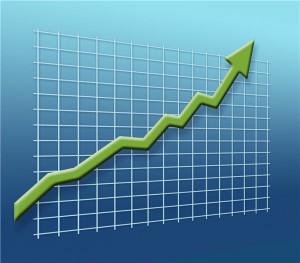27 Aug Implications of Rising Mortgage Rates
Are they threatening the recovery? Or is their effect overstated?
Between early May and mid-July, the average interest rate on the 30-year fixed-rate mortgage rose about 1%. Rates on 30-year FRMs have basically held steady since hitting a peak of 4.51% in Freddie Mac’s July 11 Primary Mortgage Market Survey – in the August 15 edition, they averaged 4.40% – but they could rise dramatically again.1,2
When mortgages become a bit costlier, things can get a bit tougher for home buyers, home sellers, home builders, real estate brokers, the construction industry, the labor market, the service industry and the broad economy. As housing’s comeback is a key factor in this current economic recovery, how worried should we be that home loans are growing more expensive?
Analysts are divided about the impact. A July Wall Street Journal poll of economists drew rather mixed opinions: 40.0% of respondents felt that more expensive mortgages “won’t have a noticeable effect” on the housing recovery, 35.6% thought that they “will slow sales” and 24.4% believed that they “will slow home-price gains.”1
So far, the lure of increasing home values appears to outweigh disappointment over pricier home loans. In the latest S&P/Case-Shiller Home Price Index (released at the end of July and covering the month of May), both the 10-city and 20-city composites showed the biggest year-over-year gain since 2006. Rising home prices (and rising stock prices) contribute greatly to the “wealth effect” felt by consumers. So there is a chance that a 100-basis-point rise in the 10-year Treasury yield (it hit 2.82% on August 15) and conventional mortgage rates may not do as much damage as feared. After all, both consumer confidence and consumer spending have improved even with a 2% hike in payroll taxes and this spring’s federal budget cuts.3,4,5
Maybe we haven’t seen it yet. The fundamental housing market indicators in our economy are lagging indicators, presenting statistics a month or more old. The Case-Shiller composite home price figures are based on three-month averages ending in the latest month of the index – in other words, the May survey reflected data from March, April and May, and May is when mortgage rates began their ascent.3
New home sales figures compiled by the Census Bureau must also be taken with a grain of salt. The pace of new home sales reached a five-year peak in May, but here is the asterisk: the Census Bureau actually measures new home sales in terms of signed sales contracts rather than closings. So a sizable percentage of those homes were not yet constructed, and the actual closing could have been months away. As it turns out, 36% of the signed sales contracts in May were for homes yet to be built – meaning they were in all probability three to nine months from completion, with most of the involved buyers unable to lock in mortgage rates in early May as they would have preferred.6
Which of two outcomes will occur? Summer home sales statistics may reflect more impact from higher mortgage rates. Perhaps they will communicate that the housing market is no longer red-hot, but reasonably healthy. The real estate industry, Wall Street and Main Street can all live with that.
The bigger question is whether consumer spending and GDP will keep improving as mortgage rates presumably keep rising. If the economy gathers or at least maintains momentum and the “wealth effect” continues to boost consumer morale, then the housing market should see sustained demand – a desirable outcome. If mortgage rates rise due to inflation (or some other factor unrelated to growth), then consumers may decide that costlier mortgages are simply too much of a stumbling block to home buying, gains in home values nonwithstanding.3
Two things can’t be denied. One, consumers have grown more optimistic recently (and wealthier, at least on paper). Two, home loans are still really cheap these days, at least by historical standards. Those two factors may maintain demand in the real estate market in the face of rising interest rates.
Kevin M. Nast is a Financial Advisor and the President of NastGroup Financial in Northville, MI 48167. He may be reached at nastgroupfinancial.com or 248.347.1888. Kevin also services clients in Bloomfield Hills, Farmington Hills, South Lyon, Canton, Novi and the surrounding metro Detroit area as well as 13 additional states across the US.
This material was prepared by MarketingLibrary.Net Inc., and does not necessarily represent the views of the presenting party, nor their affiliates. All information is believed to be from reliable sources; however we make no representation as to its completeness or accuracy. Please note – investing involves risk, and past performance is no guarantee of future results. The publisher is not engaged in rendering legal, accounting or other professional services. If assistance is needed, the reader is advised to engage the services of a competent professional. This information should not be construed as investment, tax or legal advice and may not be relied on for the purpose of avoiding any Federal tax penalty. This is neither a solicitation nor recommendation to purchase or sell any investment or insurance product or service, and should not be relied upon as such. All indices are unmanaged and are not illustrative of any particular investment.
Citations.
1 – blogs.wsj.com [7/19/13]
2 – freddiemac.com [8/15/13]
3 – forbes.com [8/14/13]
4 – nasdaq.com [8/7/13]
5 – usatoday.com [8/15/13]
6 – realestate.aol.com [6/27/13]





Sorry, the comment form is closed at this time.